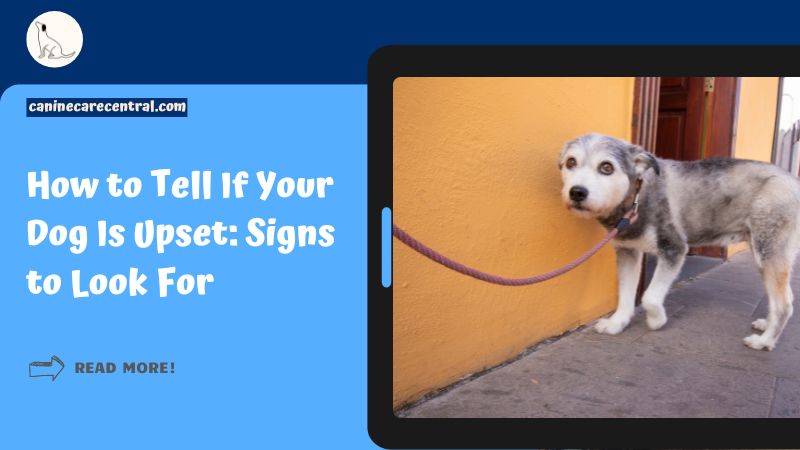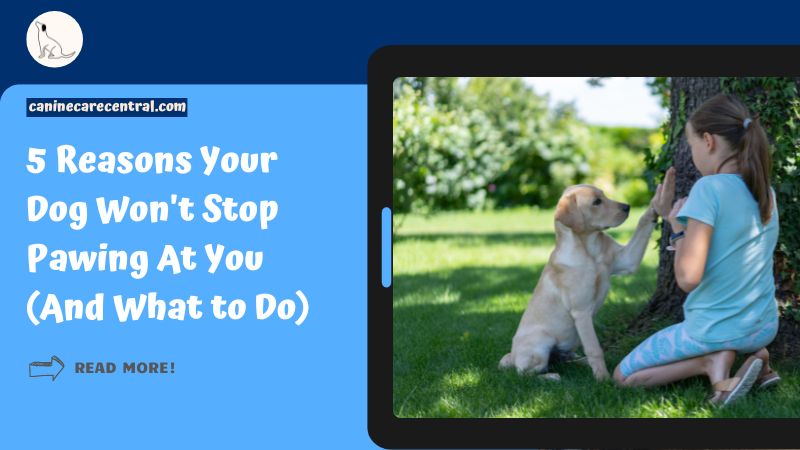Do you know what DOG ESSENTIALS you are missing out? Find out now!
Dog Stepping in Pee?
Zack Keithy, our author, is a certified veterinarian technician (UC Blue Ash) for over 6 years (contact him here). The articles written here are based on his expertise and experience, combined with a review by our expert vet reviewers including Dr M. Tarantino. Learn more about us here.
I’ve been there, too. When I first had my dog, she couldn’t help but step in pee after going about her business and it’s just the worst.
You’re cleaning up after her when you get home from work, or somebody else has stepped in it and tracked it all through the house.
It’s gross, and you don’t want to be grossed out by your own home.
Well, I’m going to share with you some simple steps that will teach you how to stop your dog from stepping in pee!
You will start by looking at why dogs step in pee, then we’ll get into some easy fixes that will stop them from repeating it and keeping your floors clean and smelling fresh!
Medical Questions? Talk to a Veterinarian 24/7.
Connect one-on-one with a licensed vet who will answer your questions in minutes.
*Article may contain affiliate links to retailers like Amazon and Chewy. Learn more on our disclosure page.
Why Does My Dog Step in His Pee?
There are many reasons why a dog might step in their own urine.
Some dogs just like to mark their territory, some may have trouble at night when they don’t realize what they’re doing, and others may be trying to tell you something.
Let’s check out the main reason for them to do so.
1. Lack of training
One of the most common reasons a dog will step in his pee is because he hasn’t been trained to do otherwise.
Dogs are creatures of habit, and if you’ve been allowing your dog to do the same thing again and again without correction, it will continue to do so.
You can work with a dog trainer or train your dog yourself by using lots of positive reinforcement.
By potty training your dog, it will know where to go to relieve itself correctly, and you can set up its “toilet” in a way where it is not likely for them to step in its own urine.
Doggy says, you might like this too: Dog Lays Down When Another Dog Approaches? [3 Solutions]
2. Lack of consciousness
Dogs can’t see where they’re walking when they’re urinating, which can lead to them accidentally stepping on it.
They’re focused on relieving themselves, and they may not even notice that they’ve stepped in their own urine.
They’ll just continue on their merry way, leaving you with an unwanted mess on your floor.
3. Marking territory
Some dogs will step in their pee because they want to mark their territory.
This is especially so if they’ve just been introduced to a new dog or if you’re bringing home a new pet.
While this is undesirable, it can be corrected with the right training.
Doggy says, you might like this too: Do Havanese Dogs Like Water? 3 Tips to Use
4. Submissive urination
Some dogs will pee on the floor when they’re scared or submissive.
This is especially common in puppies and young dogs and because of that, they might accidentally step on its pee without even knowing it.
In most cases, submissive urination can be stopped with proper training and behavior modification techniques.
Doggy says, check this out too: Why is my puppy sleeping on the pee tray?
How to Prevent Your Dog From Stepping in Its Own Pee?
The best way to prevent your dog from stepping in its own pee is by training it properly.
This means teaching them where they’re allowed to do their business and what they shouldn’t pee on.
It’s also important that you clean up any messes they make so that they don’t associate those areas with urinating.
Here are a few steps you can take to prevent your dog from stepping in its own pee in the future.
Doggy says, consider reading this too: Boston Terrier Peeing in the House? [Problem Solved]
1. Train it to be more confident
Confidence is an important aspect of a dog’s personality.
If your dog doesn’t feel confident, it may not be comfortable enough with its surroundings to go outside and pee.
A good way to help boost your dog’s confidence is by training them properly.
Basic obedience training will teach them how to respond when you give them commands such as “sit” or “stay.”
Doggy says, consider reading this too: Why Do Dogs Lick Their Lips When You Pet Them?
2. Pick it up
Whenever you see your dog peeing in the house, pick it up after it is done to stop it from stepping in its own pee.
This is very much a temporary measure until you can get it to pee at the right places where it is less likely to step in its own urine.
3. Use trays for pee pads
Some dog owners like yourself may not have the luxury to bring your dog outside to relieve itself all the time, so setting aside a “toilet” indoors is the only way.
A small issue with using pee pads is that your dog can still step on the urine accidentally, creating an unwanted trail around the house.
To stop that, you can use a pee tray that has grates on top.
This way, your dog’s urine goes onto the pee pad underneath without the chance for it to step on it.
4. Clean with an enzyme cleaner
Enzymes are naturally-occurring chemicals that will help break down the proteins in your dog’s urine.
They are found in nature and also used by humans for cleaning, so they’re safe to use around pets (and people!).
What’s good about enzyme cleaners is that they thoroughly clean any signs of urine so that your dog will not return to the same spot and pee again.
This will be very useful during the potty training process.
Doggy says, you might be keen to read this too: Havanese peeing in the house?
5. Check for medical issues
Controlling your dog can be challenging due to a medical condition (such as a urinary tract infection, intestinal parasites or a virus) or anatomical abnormality (such as a patent urachus or ectopic ureter).
If you suspect that your dog has a condition that affects his urination habits and is causing him to pee in inappropriate places, talk with your vet.
In these situations, your veterinarian will likely recommend medication or surgery to help your dog’s urinary control.
6. Take it outside regularly
For young puppies and senior dogs, their bladder control is not good and this will cause them to pee randomly.
Because of these random events occurring outside of where it should pee, stepping on their urine is more likely to happen.
In such a situation, it will be most useful if you set an alarm to remind you to bring them out on a regular basis.
Doggy says, you might be interested in this too: Dog Keeps Ringing The Bell to Go Outside? Stop the Madness!
What should you do if your dog stepped in its pee?

I highly recommend that you take the following steps each time your dog has an accident and steps on its own pee.
Clean its paws
Put on your gloves first before doing this as direct contact with pee or poo can lead to problems in humans due to the pathogens in them.
Using dog-safe wet wipes or a damp towel, wipe down your dog’s paws completely and dry them off with a dry towel.
Repeat this step for any other body parts that came into contact with the urine.
You should always have designated towels to perform these tasks so that you do not mix them up with your regular towels.
Wipe the spot down
For urination, use a dry cloth or paper towels, and for excrement, use a poo bag or paper towels.
Additionally, you can use toilet paper to pick up excrement or urine, with the benefit that you can flush those materials down the toilet afterward.
Following the removal of the bulk of the problem, gently wipe or blot away the remaining tiny residue using towels or rags wet with warm water (don’t rub it in).
Odor remover
Lastly, spray or wipe a safe odor remover on the area where the problem occurred.
The odor remover should contain enzymes that break down organic matter and bacteria, as well as deodorizers to neutralize any lingering odors.
You can use a commercial product such as Rocco & Roxie Odor Eliminator or a homemade solution of baking soda and water.
Doggy says, consider reading this too: Why is My Puppy Walking Funny? [Solve the Mystery]
Frequently Asked Questions (FAQs)
Why is my dog walking while peeing in the house?
This is called “scooting” or “dragging their butt” on the ground. Your dog may have irritation or soreness in his genital area, a urinary tract infection, or could possibly be a sign of submissive urination.
Will vinegar stop dogs from peeing in the same spot?
Yes, vinegar can help in stopping a dog from peeing in the same spot. It contains acetic acid which is a strong odor remover. If you have a dog who pees in the same spot, vinegar can help to neutralize the urine odor and also acts as a natural cleaning agent that kills bacteria and removes stains.
In Conclusion: How to Stop My Dog From Stepping in Pee?
Now that you know how to stop your dog from stepping in pee, you can start using these tips today.
You’ll be able to enjoy your dog’s company without worrying about them stepping in pee.
Try using one of the techniques above and see if it works for you! If not, try another one!
Remember to be patient with your dog!
Check out other dog behavior articles on our site such as why do dogs sleep with their bum facing you, can dogs survive in the wild, dog peeing in house after boarding, and many more!
You’ve made it to the end, but I hope it’s not the end of our journey. We want to hear your voice! Share your thoughts, problems, suggestions, or anything related to your dog in the comments section. And don’t forget to join our newsletter today too.




